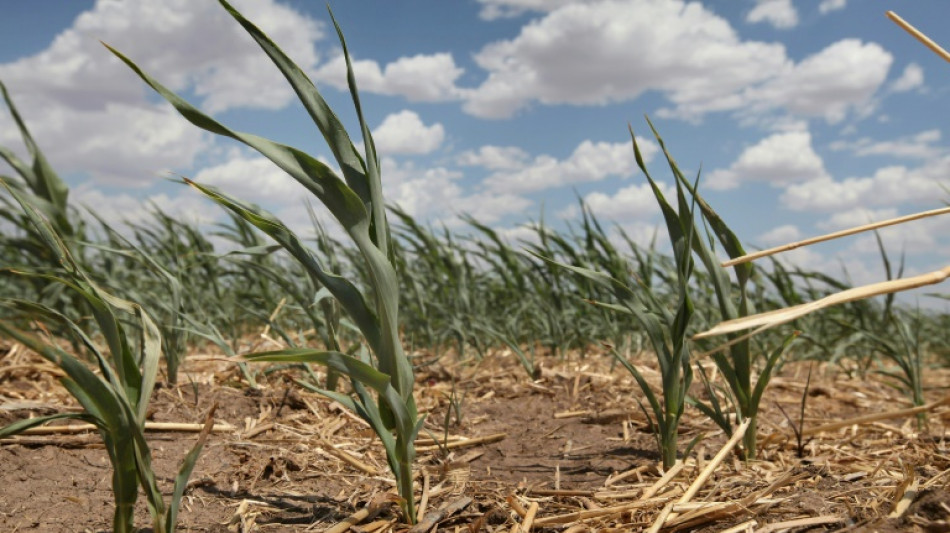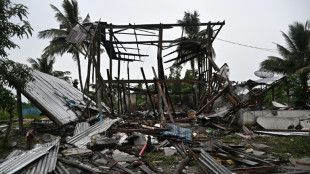
-
 Home from home: Trump showcases his resorts in golf diplomacy
Home from home: Trump showcases his resorts in golf diplomacy
-
EU accuses online giant Temu over sale of 'illegal' products

-
 'No alternative' to two-state solution for Israel, Palestinians
'No alternative' to two-state solution for Israel, Palestinians
-
US plan to destroy contraceptives sparks uproar

-
 Turkey battles wildfires as heatwave grips Med
Turkey battles wildfires as heatwave grips Med
-
Dollar rises on EU-US trade deal but European stocks turn sour

-
 Thai-Cambodia evacuees hail truce news with mixed emotions
Thai-Cambodia evacuees hail truce news with mixed emotions
-
Rivals laud 'phenomenally talented' 12-year-old swim sensation

-
 Major Israeli rights groups brand Gaza campaign 'genocide'
Major Israeli rights groups brand Gaza campaign 'genocide'
-
EU defends Trump trade deal facing backlash

-
 McIntosh wins again at swimming worlds as Yu, 12, just misses out
McIntosh wins again at swimming worlds as Yu, 12, just misses out
-
Trump says Gaza ceasefire 'possible' amid Starmer talks

-
 McIntosh wins second Singapore gold, China prodigy Yu fourth
McIntosh wins second Singapore gold, China prodigy Yu fourth
-
Hunger must never be 'weapon of war': UN chief

-
 Brussels says EU-US deal 'better than trade war' with Trump
Brussels says EU-US deal 'better than trade war' with Trump
-
Three things we learned from Belgian F1 Grand Prix

-
 Walsh defies illness in US camp to win butterfly world gold
Walsh defies illness in US camp to win butterfly world gold
-
Qin beats Olympic champ Martinenghi for 100m breaststroke world gold

-
 Ireland's 'economic miracle' at risk from tariffs
Ireland's 'economic miracle' at risk from tariffs
-
Stock markets, dollar rise on EU-US trade deal

-
 England's Lionesses head home to party after Euro glory
England's Lionesses head home to party after Euro glory
-
Philippine flooding centre stage at Marcos state of nation speech

-
 Thailand and Cambodia agree truce after five days of fighting
Thailand and Cambodia agree truce after five days of fighting
-
Israeli settlers attack West Bank Christian village

-
 Food arrives in Gaza after Israel pauses some fighting
Food arrives in Gaza after Israel pauses some fighting
-
Starmer to press Trump on Gaza, trade in Scotland talks

-
 Jamie Overton added to England squad for fifth Test against India
Jamie Overton added to England squad for fifth Test against India
-
China to offer childcare subsidies in bid to boost birth rate

-
 Artists, scientists breathe life into prehistoric woman
Artists, scientists breathe life into prehistoric woman
-
Iconic French chef stakes reputation on vegan menu

-
 CK Hutchison eyes 'major' Chinese investor for Panama ports deal
CK Hutchison eyes 'major' Chinese investor for Panama ports deal
-
England's remarkable Euro 2025 success a triumph for 'incredible' Wiegman

-
 Maduro's party sweeps Venezuela mayoral vote as opposition boycotts
Maduro's party sweeps Venezuela mayoral vote as opposition boycotts
-
Thailand and Cambodia begin truce talks as fighting drags on

-
 Stock markets boosted after EU, US strike trade deal
Stock markets boosted after EU, US strike trade deal
-
Four killed as heavy rain, flooding soaks northern China

-
 Heineken sees beer sales dip but keeps profit outlook
Heineken sees beer sales dip but keeps profit outlook
-
China's Pan puzzled after shock 200m free exit at swimming worlds

-
 Honkytonk Kenya: Africa's home of country music
Honkytonk Kenya: Africa's home of country music
-
Head of China's Shaolin Temple removed over embezzlement claims

-
 Tunisia plastic collectors spread as economic, migration woes deepen
Tunisia plastic collectors spread as economic, migration woes deepen
-
China's birthplace of kung fu rocked by embezzlement probe

-
 Europe hopes for 'no surprises' as US weighs force withdrawals
Europe hopes for 'no surprises' as US weighs force withdrawals
-
France's long wait for Tour winner goes on but Thevenet sees hope

-
 Most markets rise, euro boosted after EU strikes US trade deal
Most markets rise, euro boosted after EU strikes US trade deal
-
US tariff tussles stuff of nightmares for Bordeaux winemakers

-
 Taiwan's garbage trucks offer classical music and a catch-up
Taiwan's garbage trucks offer classical music and a catch-up
-
Thailand and Cambodia truce talks due but strikes continue

-
 De Minaur battles to DC Open crown
De Minaur battles to DC Open crown
-
US-China set to meet with extension of tariff pause on the cards

| RBGPF | 0% | 75 | $ | |
| NGG | -1.05% | 71.4 | $ | |
| JRI | -0.08% | 13.08 | $ | |
| BCE | -0.27% | 24.135 | $ | |
| CMSC | 0.21% | 22.532 | $ | |
| BCC | -0.73% | 87.5 | $ | |
| RELX | -1.07% | 52.17 | $ | |
| RIO | -1.77% | 62 | $ | |
| SCU | 0% | 12.72 | $ | |
| SCS | 0.75% | 10.66 | $ | |
| VOD | -2.47% | 11.155 | $ | |
| RYCEF | 0.38% | 13.2 | $ | |
| CMSD | 0.09% | 22.91 | $ | |
| GSK | -0.87% | 37.644 | $ | |
| BTI | -0.83% | 51.82 | $ | |
| BP | 1.33% | 32.633 | $ | |
| AZN | -1.08% | 71.885 | $ |

'Extreme healt belt' to cover middle of US by 2053: report
An area of intensely warm weather -- a so-called "extreme heat belt" -- with at least one day per year in which the heat index hits 125 Fahrenheit (52C), is expected to cover a US region home to more than 100 million people by the year 2053, according to a new study.
The research, carried out by nonprofit First Street Foundation, used a peer-reviewed model built with public and third-party data to estimate heat risk at what they called a "hyper-local" scale of 30 square meters.
First Street Foundation's mission is to make climate risk modeling accessible to the public, government and industry representatives, such as real estate investors and insurers.
A key finding from the study was that heat exceeding the threshold of the National Weather Service's highest category -- called "Extreme Danger," or above 125F -- was expected to impact 8.1 million people in 2023 and grow to 107 million people in 2053, a 13-fold increase.
This would encompass a geographic region stretching from northern Texas and Louisiana to Illinois, Indiana, and Wisconsin -- inland areas far from the more temperate weather often seen near the coasts.
Heat index, also known as the apparent temperature, is what the outside temperature really feels like to the human body when relative humidity is combined with air temperature.
To create their model, the research team examined satellite-derived land surface temperatures and air temperatures between 2014 and 2020, to help understand the exact relationship between the two measurements.
This information was further studied by factoring in elevation, how water is absorbed in the area, the distance to surface water and the distance to a coast.
The model was then scaled to future climate conditions, using a "middle of the road" scenario envisaged by the Intergovernmental Panel on Climate Change, in which carbon dioxide levels start falling by mid-century, but do not reach net zero by 2100.
Beyond "Extreme Danger" days, areas across the whole country are expected to experience hotter temperatures, with varying degrees of resilience.
"These increases in local temperatures result in significant implications for communities that are not acclimated to warmer weather relative to their normal climate," the report said.
For example, a 10 percent temperature increase in the northeastern state of Maine may be as dangerous as a 10 percent increase in the southwestern state of Texas, despite the higher absolute temperatures seen in Texas.
The biggest predicted shift in local temperature occurred in Miami-Dade County, Florida, which currently sees seven days per year at its hottest temperature of 103 Fahrenheit. By 2053, that number is expected to increase to 34 days at 103 degrees.
And the increase in air conditioning use that is likely to result from such temperature spikes will strain energy grids, the report warned, leading to more frequent, longer lasting brownouts.
G.Schulte--BTB

